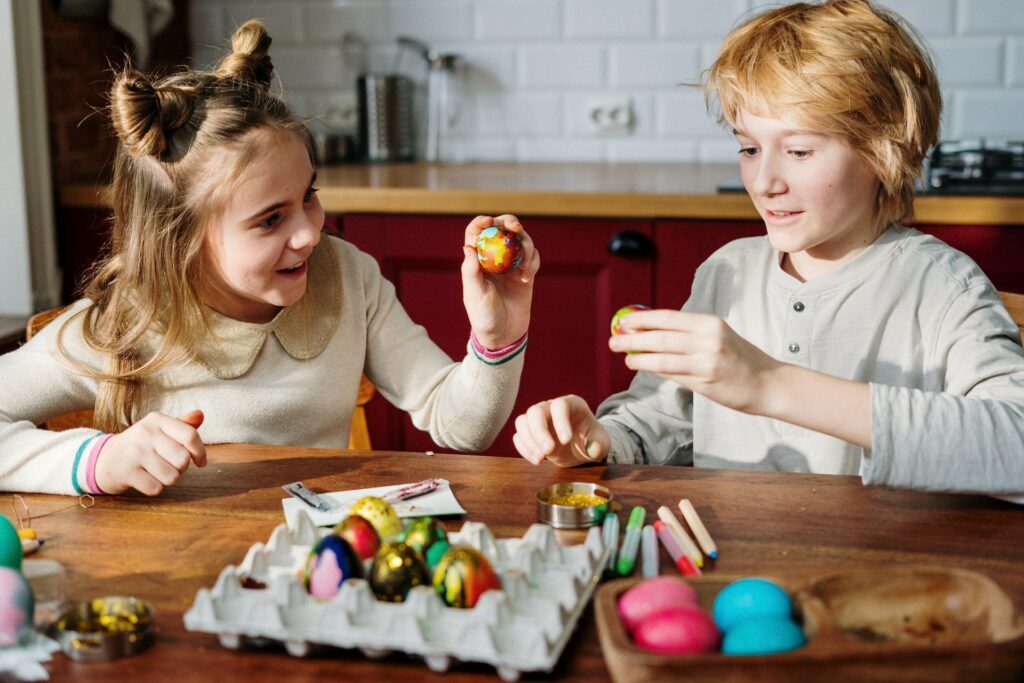Siblings: sometimes they’re two peas in a pod, and others can be so different you may wonder if they’re truly related. Either way, they are growing up together, and have a lasting impact on each other.
When one child is on the autism spectrum, it can make that relationship a bit harder for them to manage on their own. But with some work, some empathy, and understanding, your children can build a truly special bond.
At Ready Set Connect, we know many of our clients have neurotypical siblings at home. Here are some tips for you to help foster positive sibling relationships between your children.
- Squeeze in some one-on-one time
Your neurotypical child can often feel lonely and jealous of all the time you spend with their autistic sibling, especially if the sibling has multiple doctor and therapy appointments each week. Because of this, try to set aside special one-on-one time with your neurotypical child.
Think about something to do that they can depend on and that will give you both a chance to connect. It can be as simple as having a 30-minute long ice cream date once a month, or taking a walk around the block every evening. That way, they can look forward to that time and there is less of a chance of building resentment or jealousy.
- Talk to them about their sibling
Your neurotypical child has a right to know and understand what their sibling is going through. Be sure to talk with them openly at a developmentally appropriate level about their sibling and all the challenges and growth they’re experiencing. Answer all of their questions to the best of your ability, and make yourself open to discussions on the topic in the future as they process the information.
- Guide them through conflicts
Though you may want to let your children work out any conflicts on their own, siblings might need some help problem-solving in the beginning, especially if your child has any disabilities that might make communication more difficult. You do not need to intervene with every conflict, but you should make sure you are helping to support and guide them to work out their issues together in a developmentally appropriate manner.
For example, your neurotypical child may have learned to expect an apology from their friends in school, but if their autistic sibling has some verbal limitations, that apology may look and sound a little different. In this example, you should explain to both children that instead of saying the words “I’m sorry,” they can hug, or high five as an option to express how they care for one another. The goal is to help them learn how to eventually work it out on their own.
- Celebrate both children!
When you have a child with special needs, it’s easy to make big deals about any and all milestones. Remind yourself along the way to give all of your children the same celebratory treatment: they may be working on different skills, but they’re all important.
That 95% on a weekly third grade spelling test may not seem as important as your autistic child’s first words at age eight, but to your young children, the accomplishment can feel the same.
- Different standards can be okay
Your neurotypical child can see that their sibling is treated a little differently, and that’s okay, as long as you are open and set developmentally appropriate expectations for everyone.
For example, your child with autism may use a fidget to focus at school, and your neurotypical child may complain that it’s not fair that their sibling gets “to play with a toy” and they do not. A good analogy to use to explain to a young child is to consider a pair of eyeglasses. Some people need glasses to help them see their schoolwork, while some do not. In the same way that glasses might help a person to see so they can do their work, the fidget helps their sibling to focus so they can do their work.
- Find ways for them to spend quality time together
Despite any labels they may have, your kids are siblings, and that means that they’re family, and spend a lot of time together. Depending on their ages and abilities, you may need to help facilitate some joint activities, but it’s important for them to have some regular positive sibling interactions, whatever that may look like.
The best place to start is to try to find a shared interest. Maybe they both like trains and can work together building tracks and pushing trains around. Perhaps they have a favorite TV show in common that they can sit and watch together. Or maybe they both enjoy drawing and can sit at a table together and make their own pictures in tandem. It doesn’t necessarily have to be an interactive game; it’s simply important for them to have positive memories and experiences together.
There is no one surefire way to get your children to cooperate and get along: everybody is different, and every relationship is different. Just be mindful of your children’s different ages and abilities as you follow these tips. If you need any more support, reach out to us at Ready Set Connect. We are ready to help you set up positive connections!
Resources:

